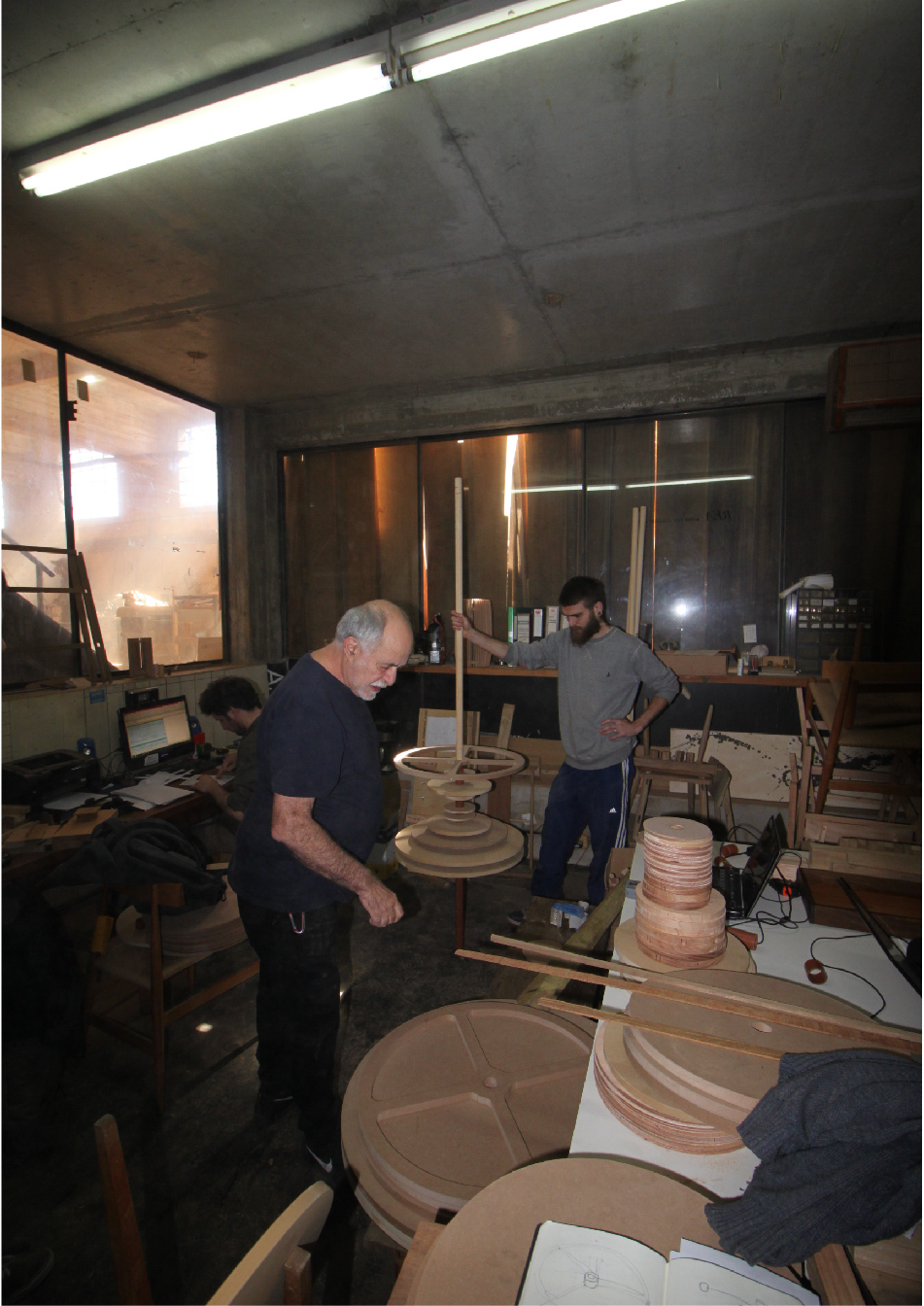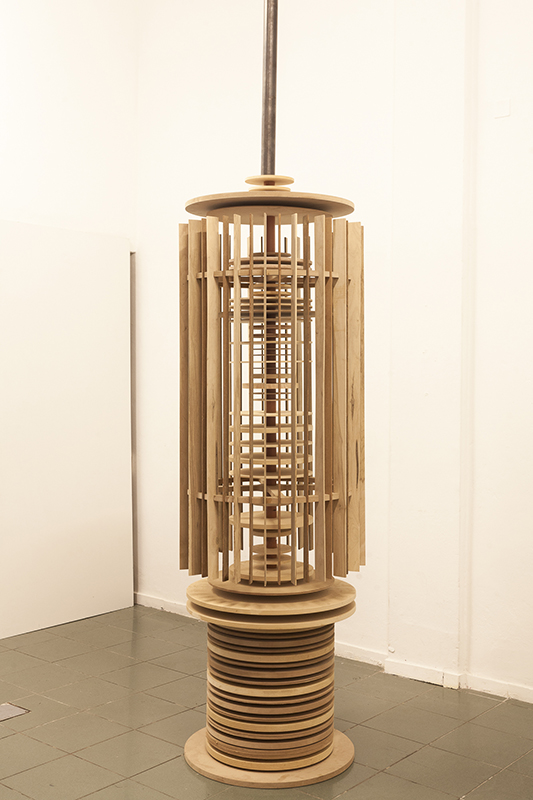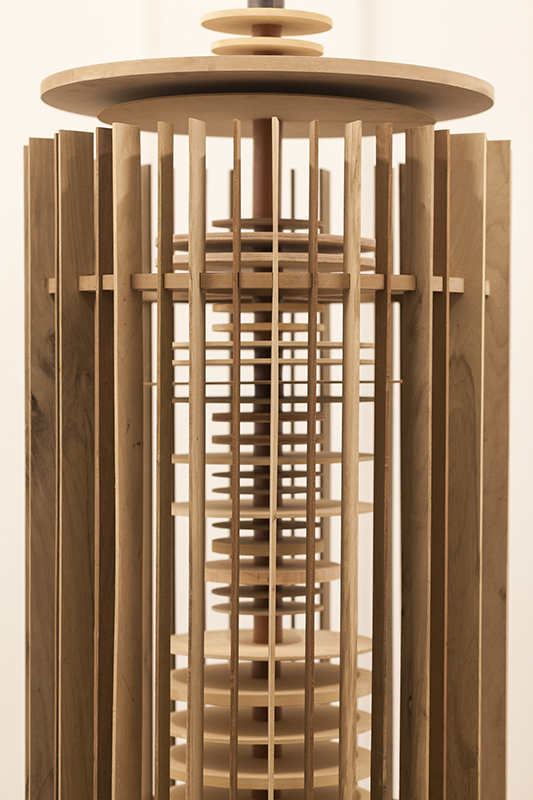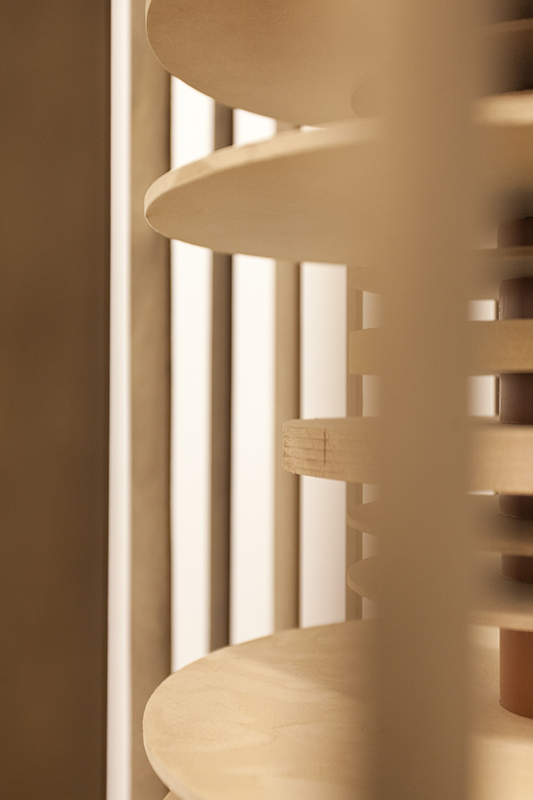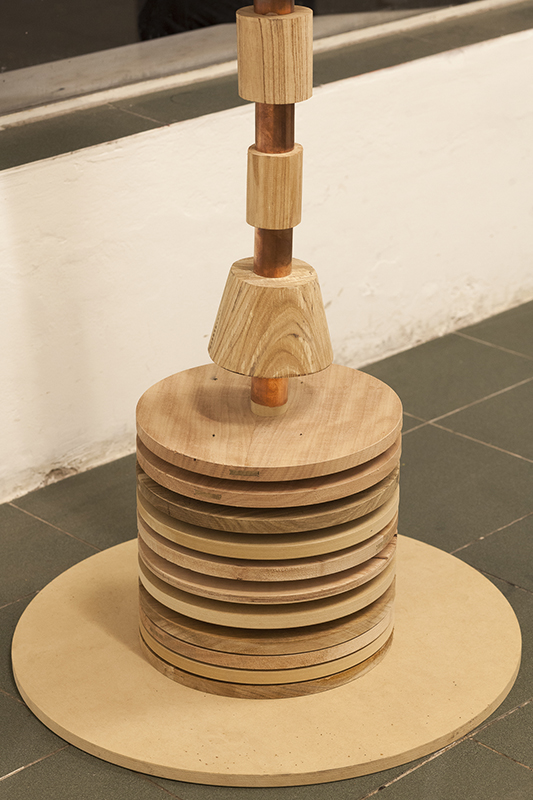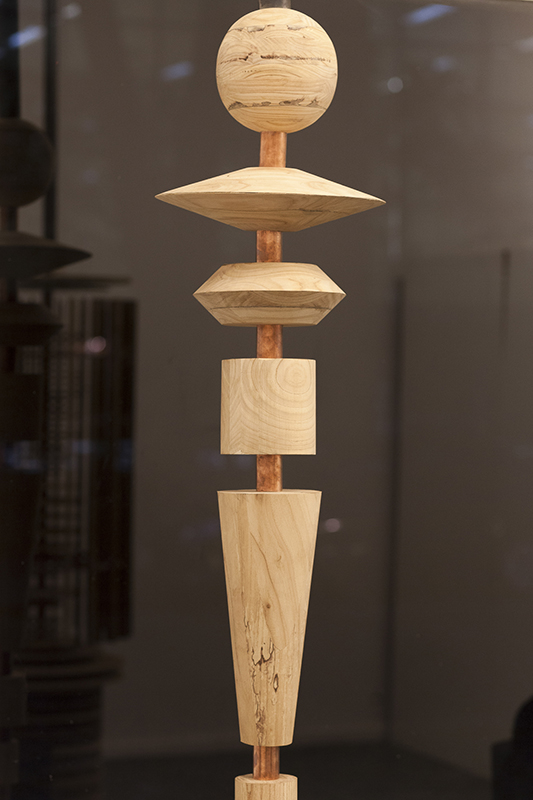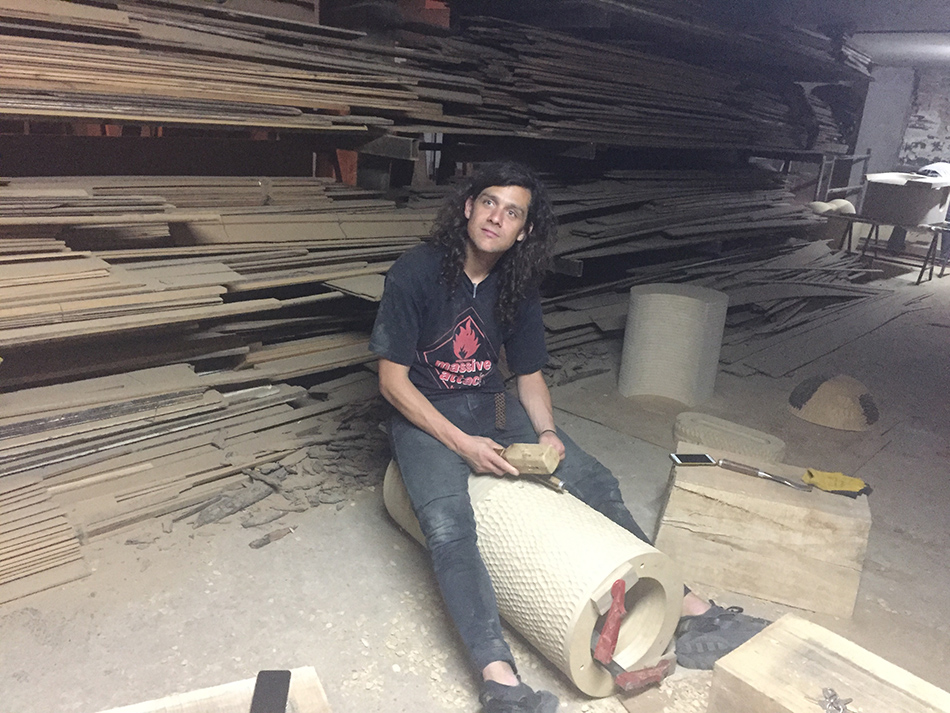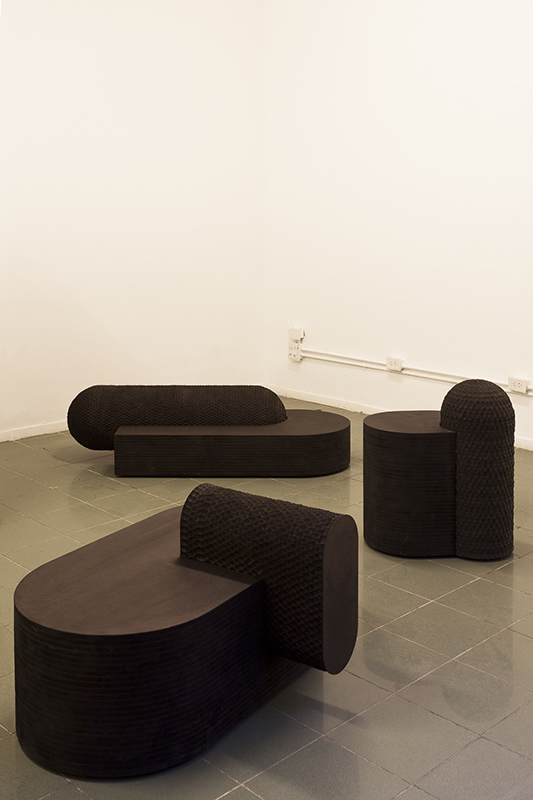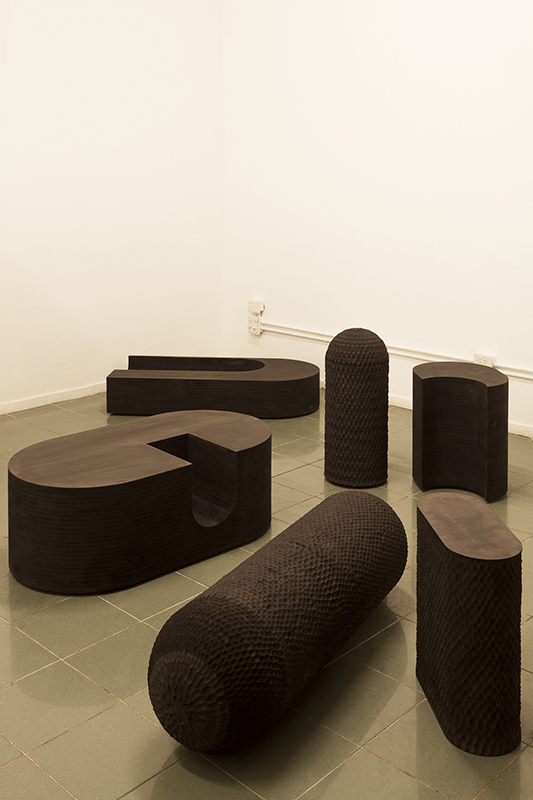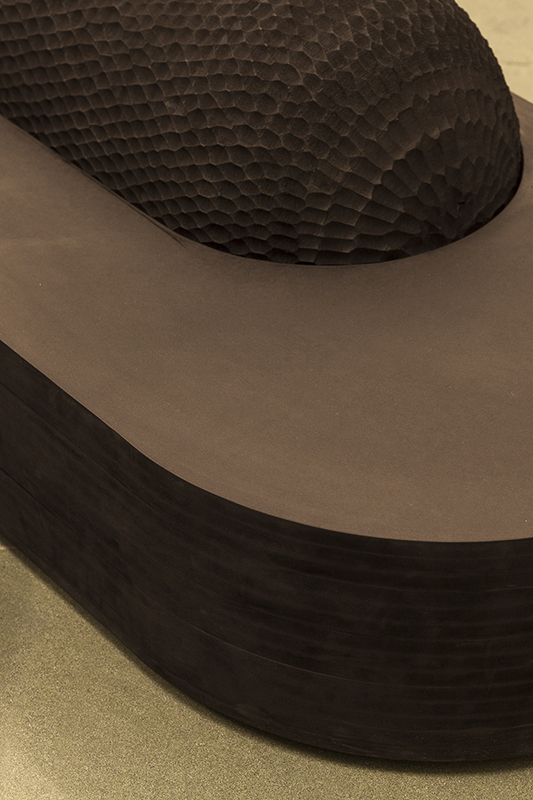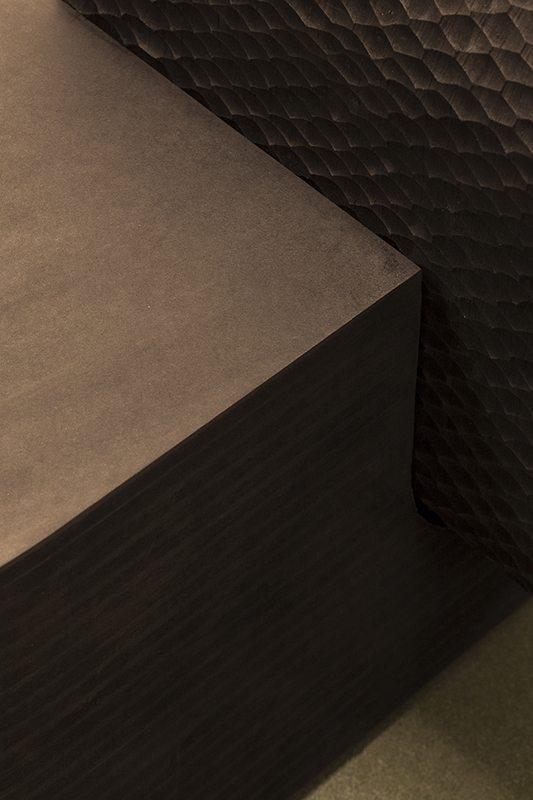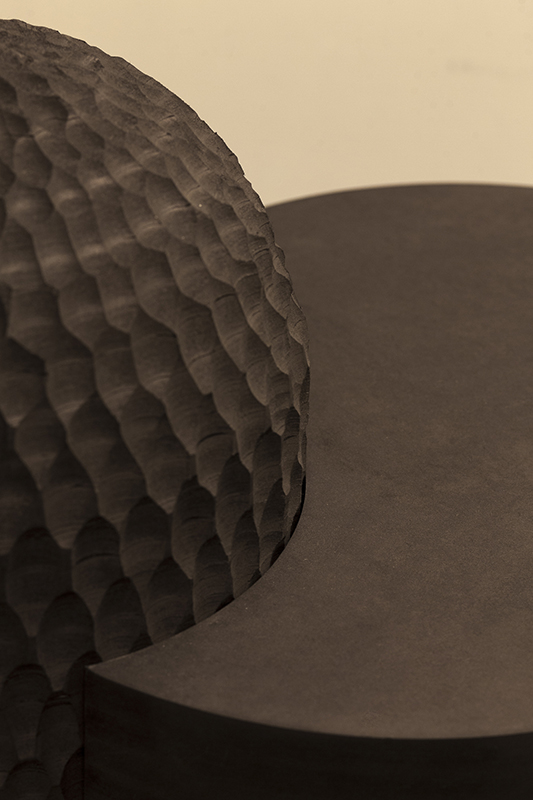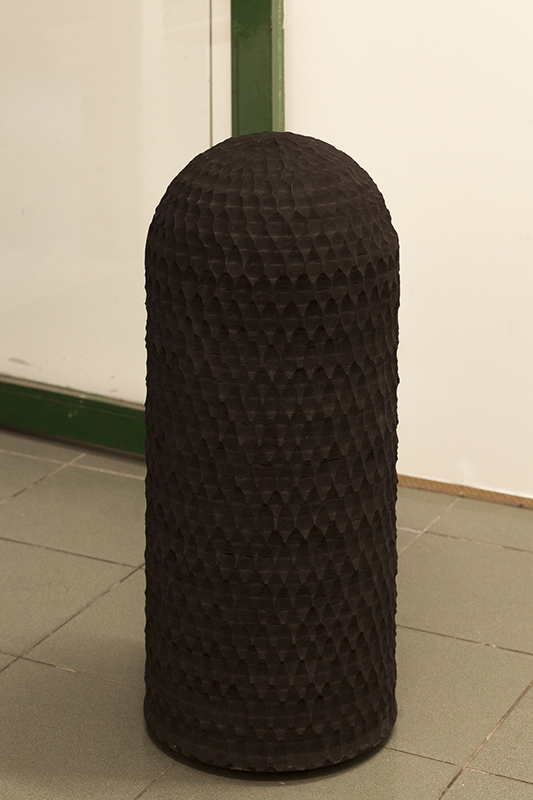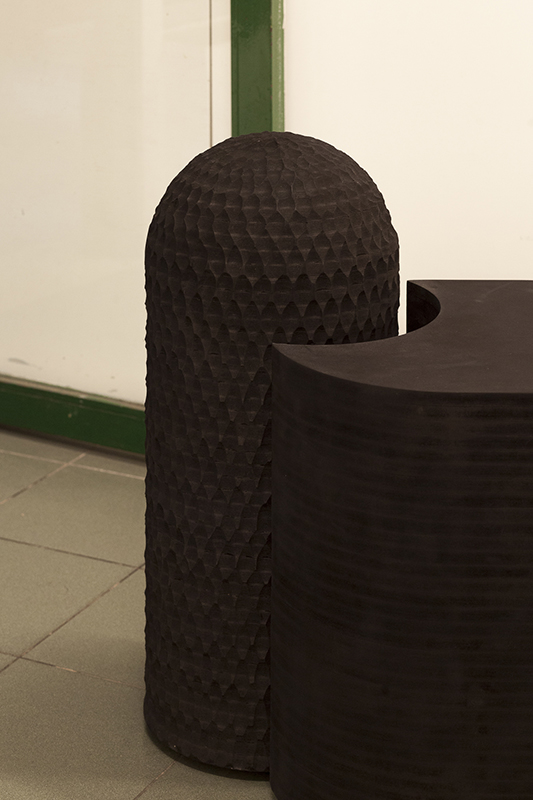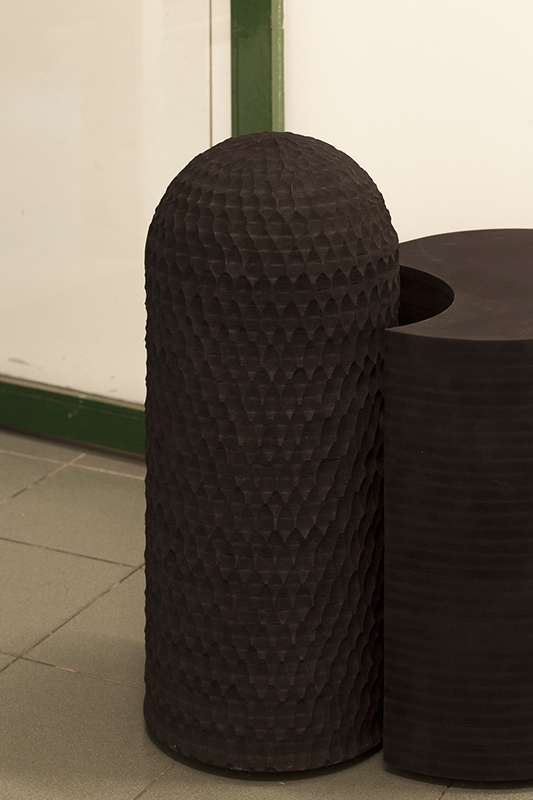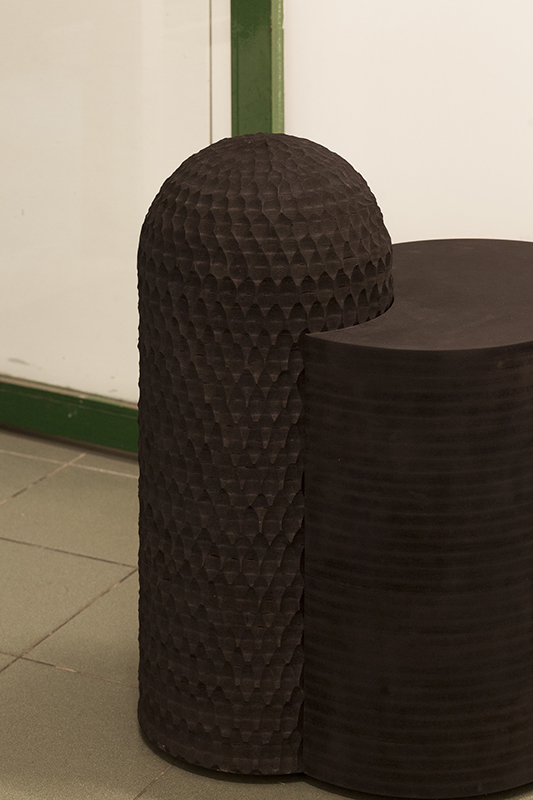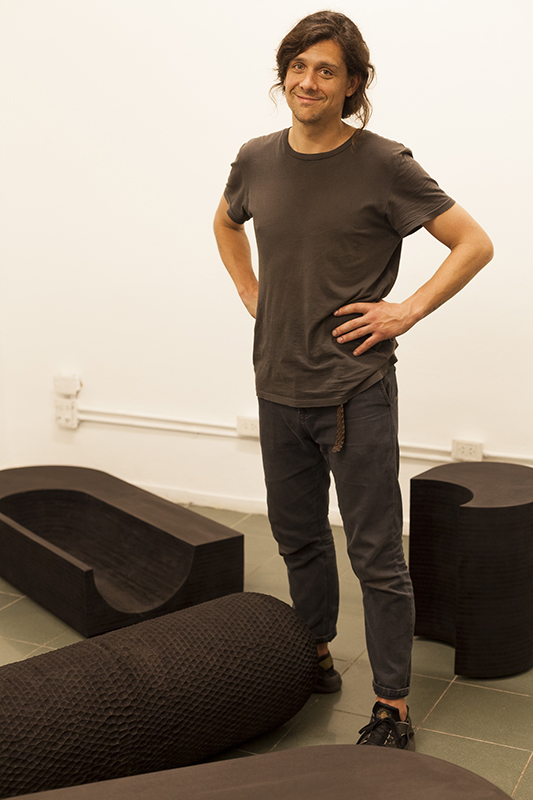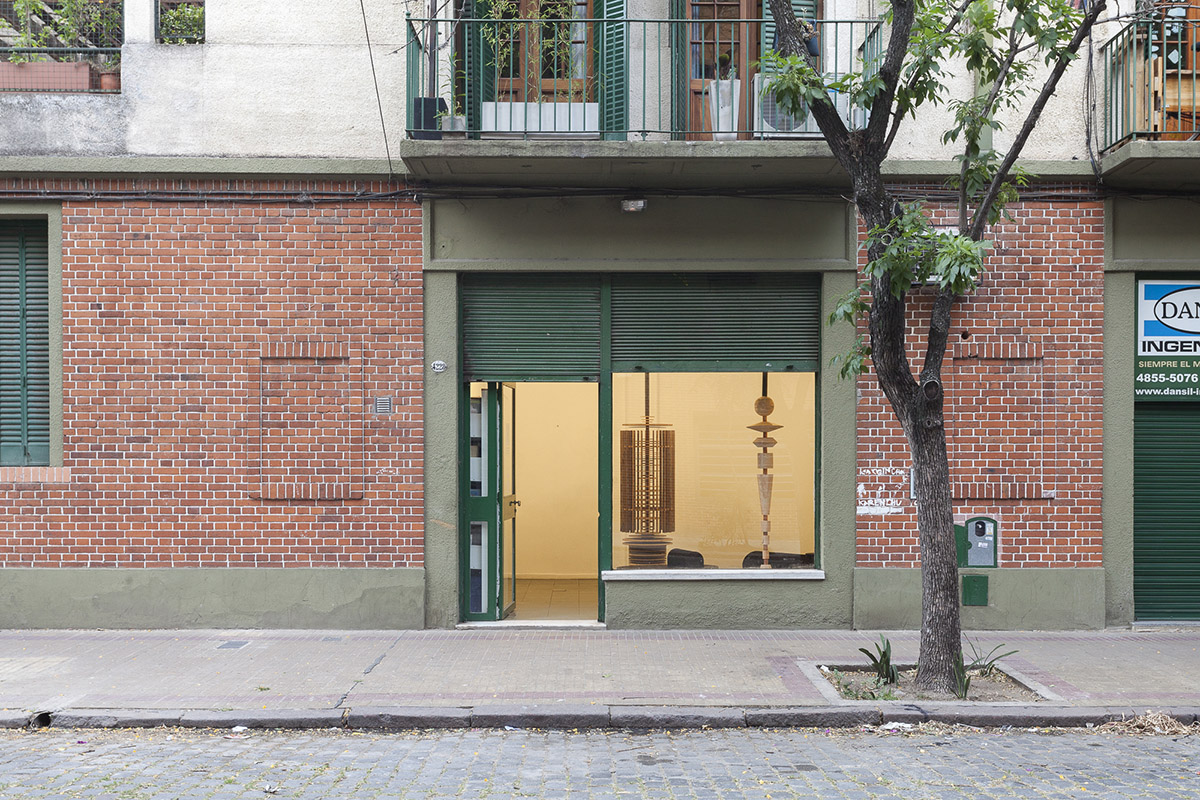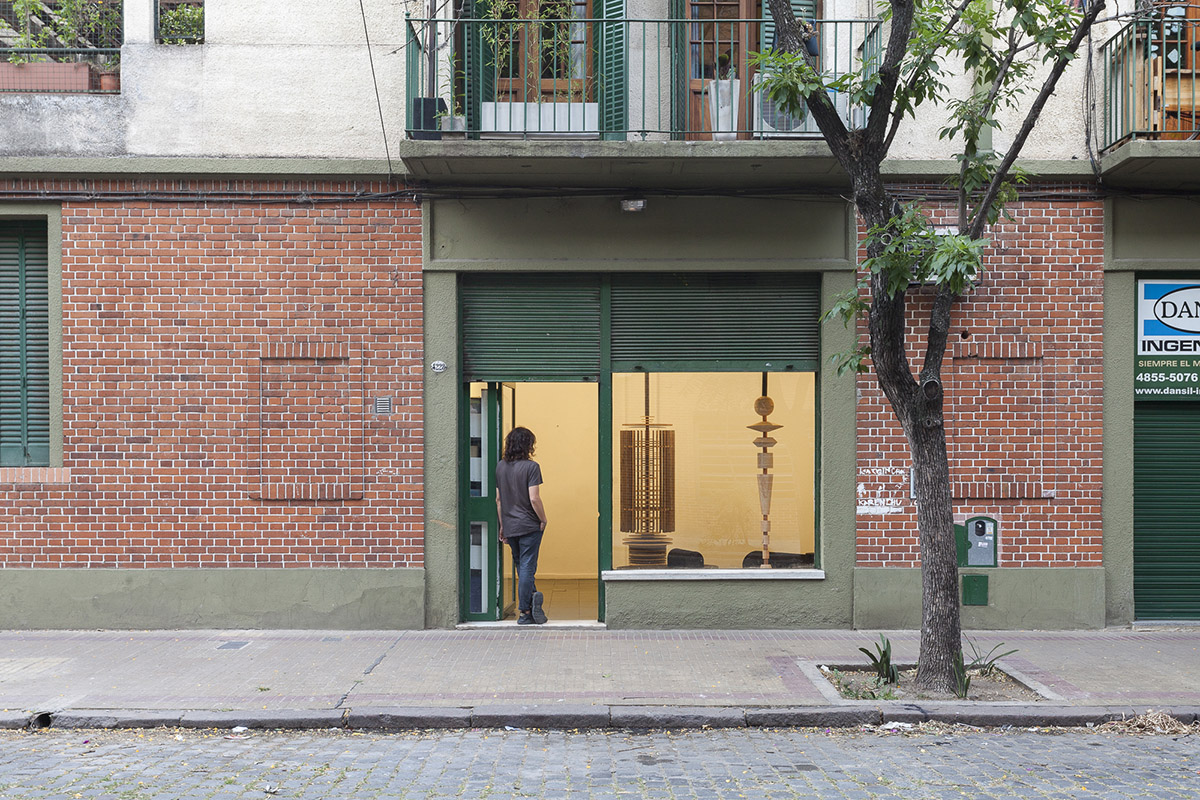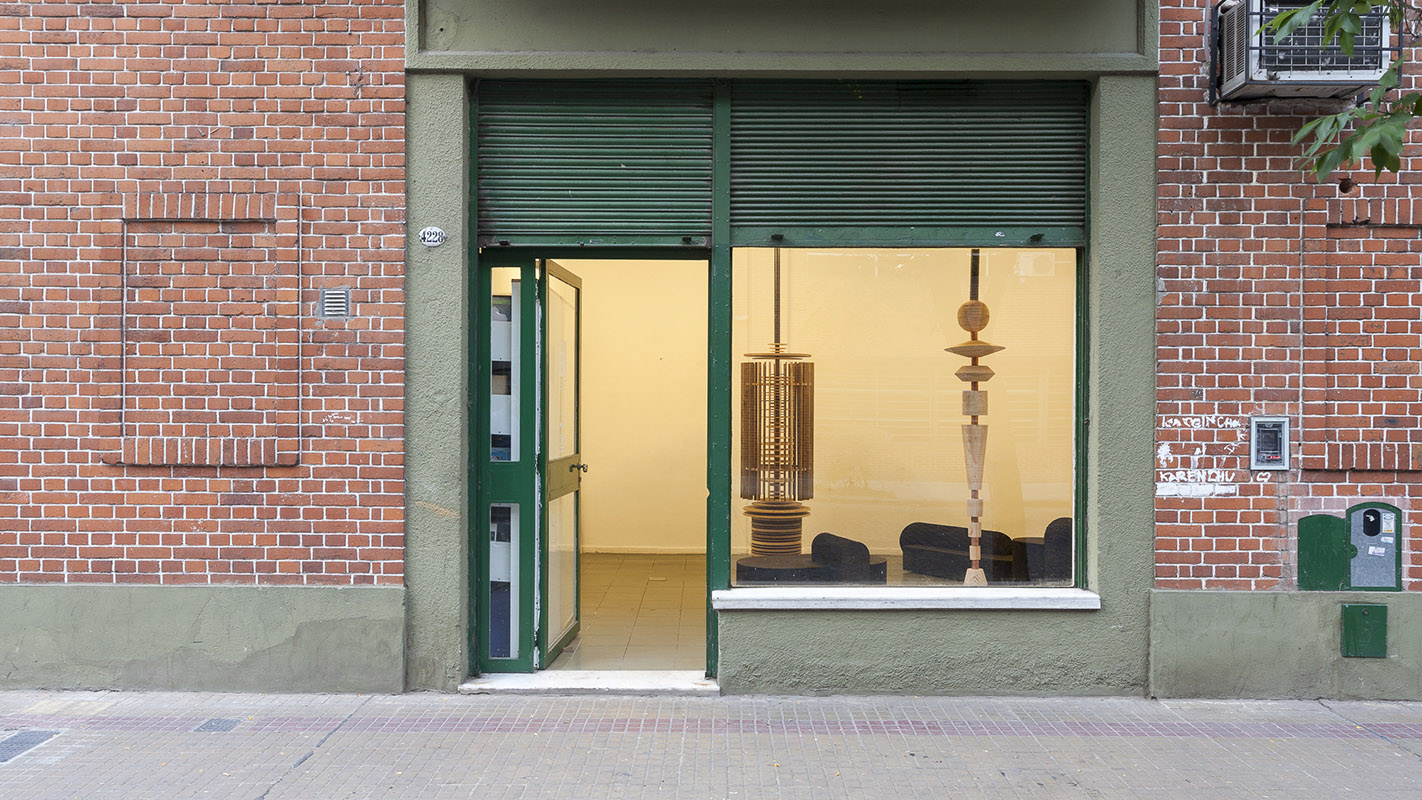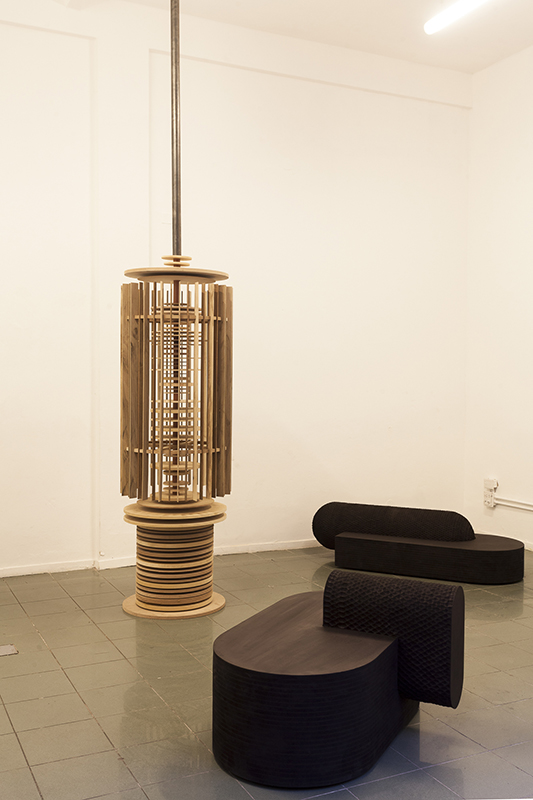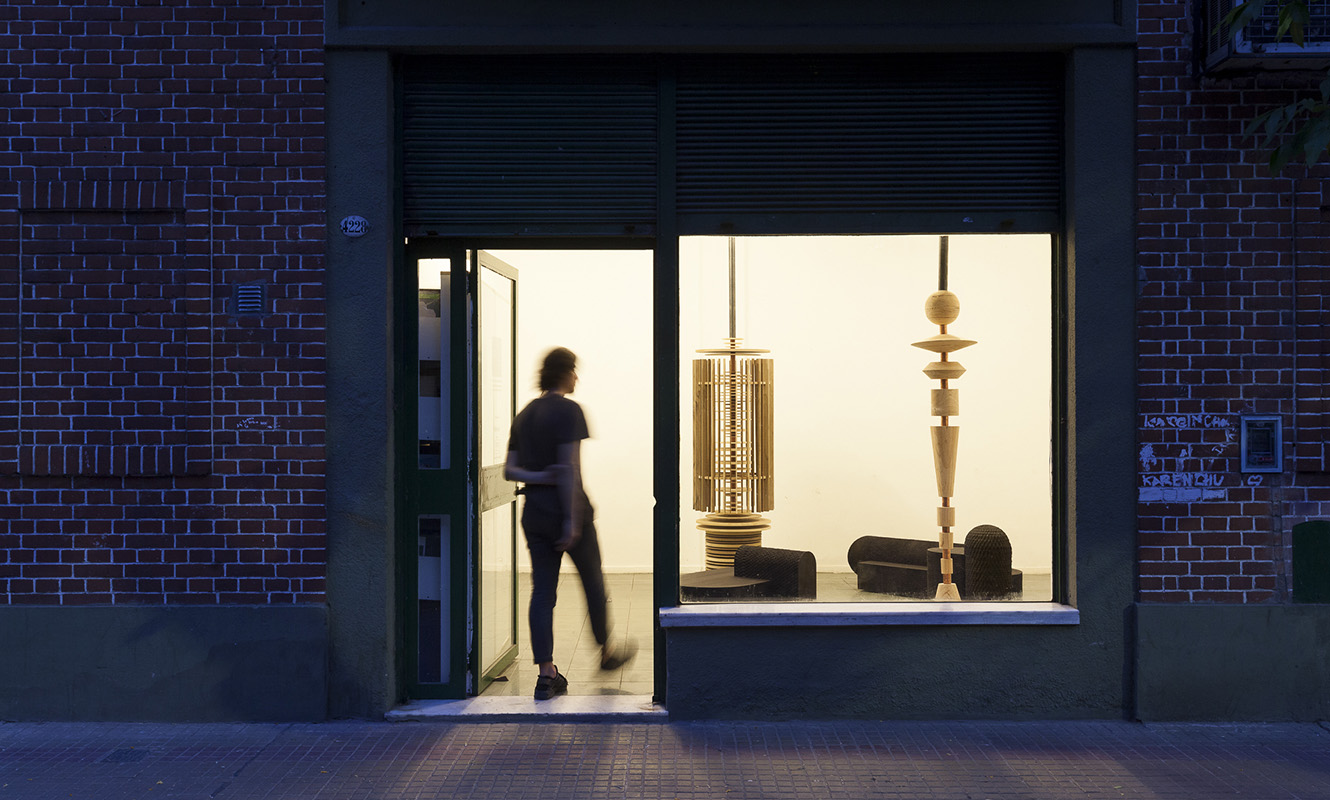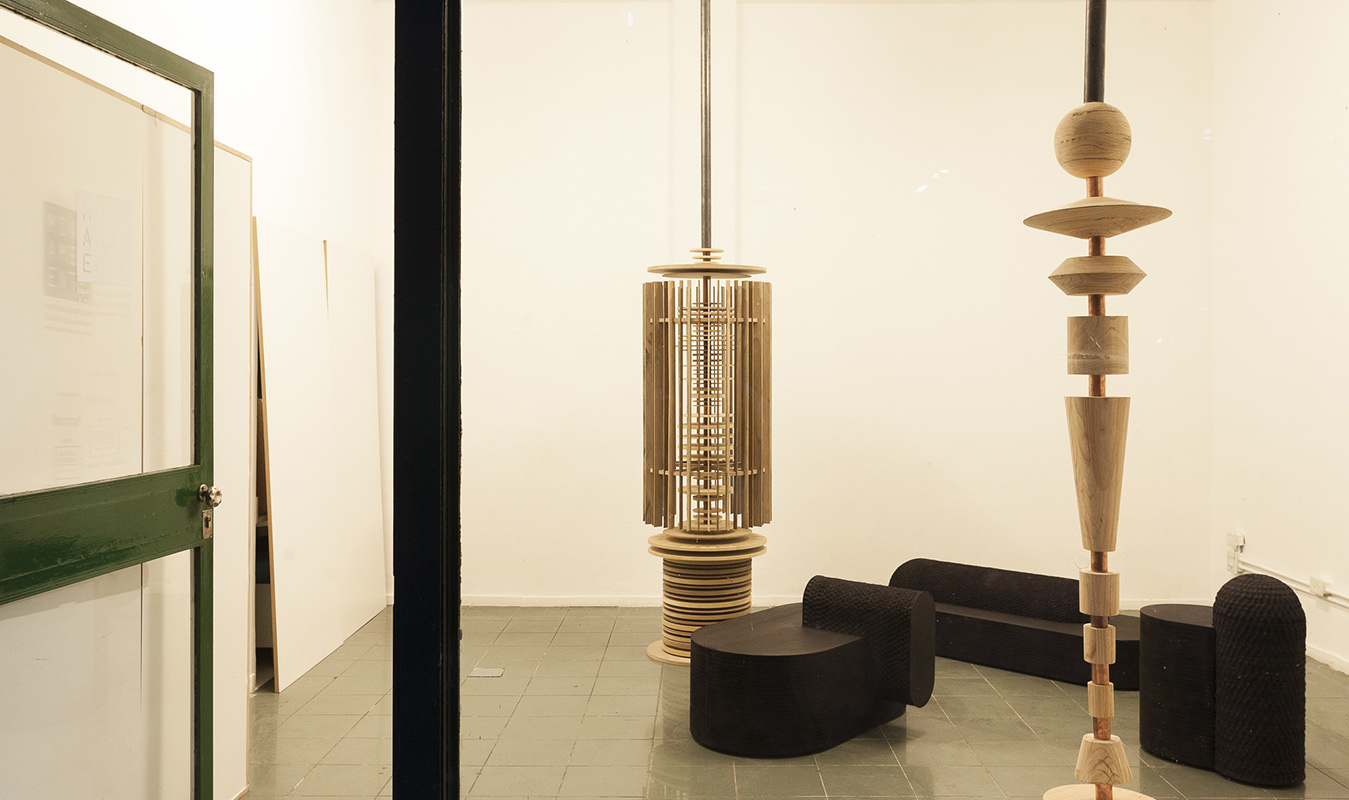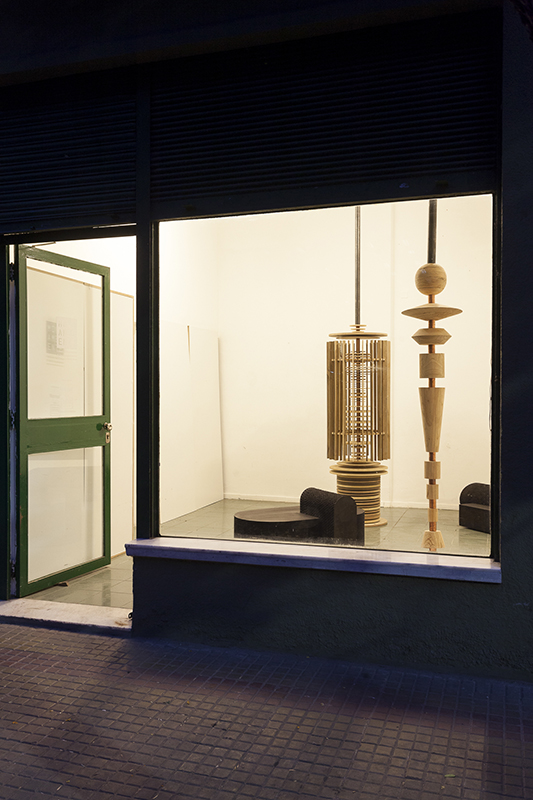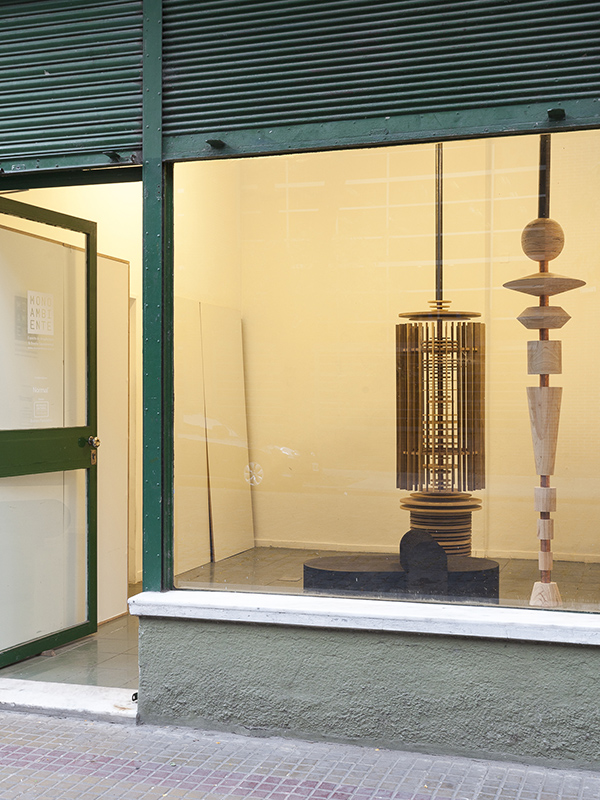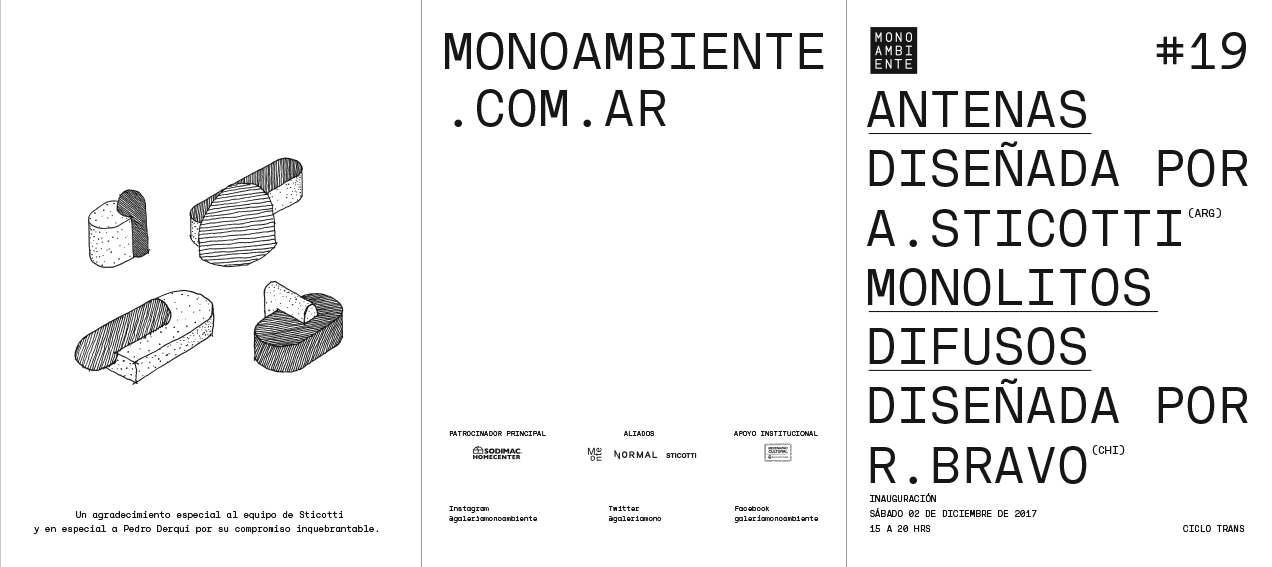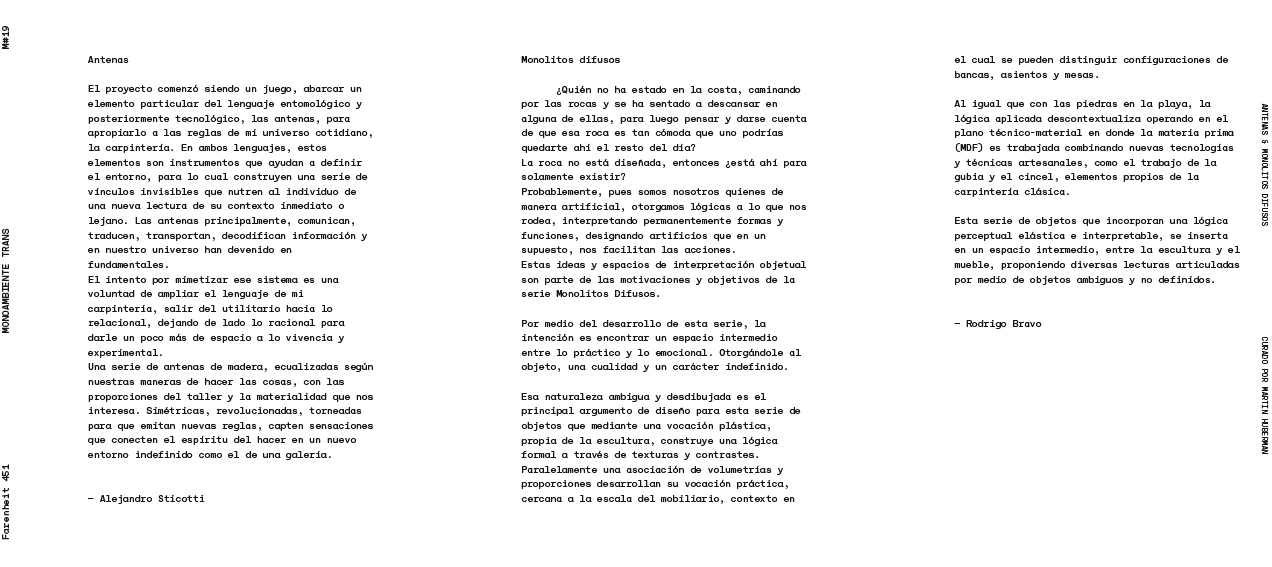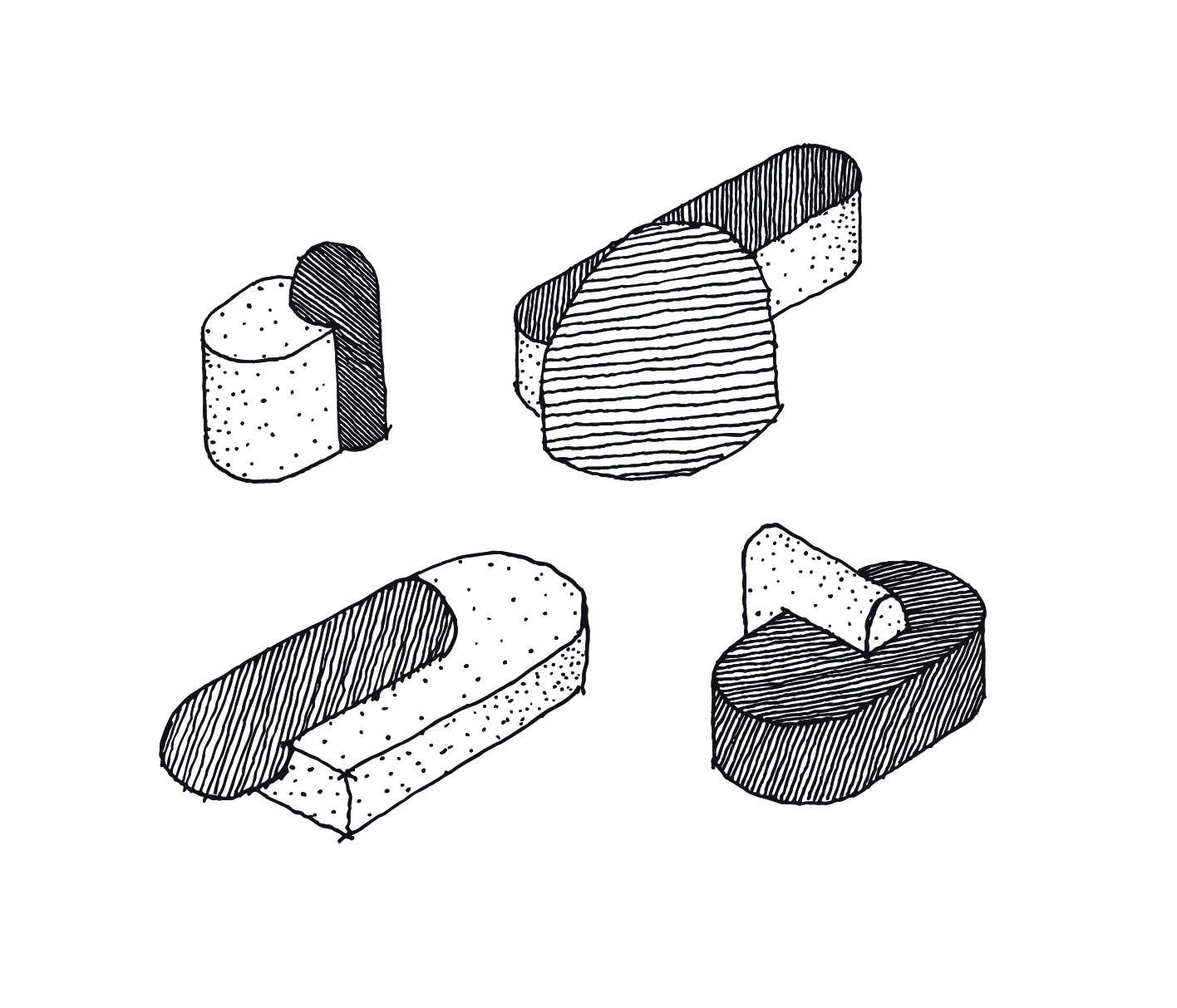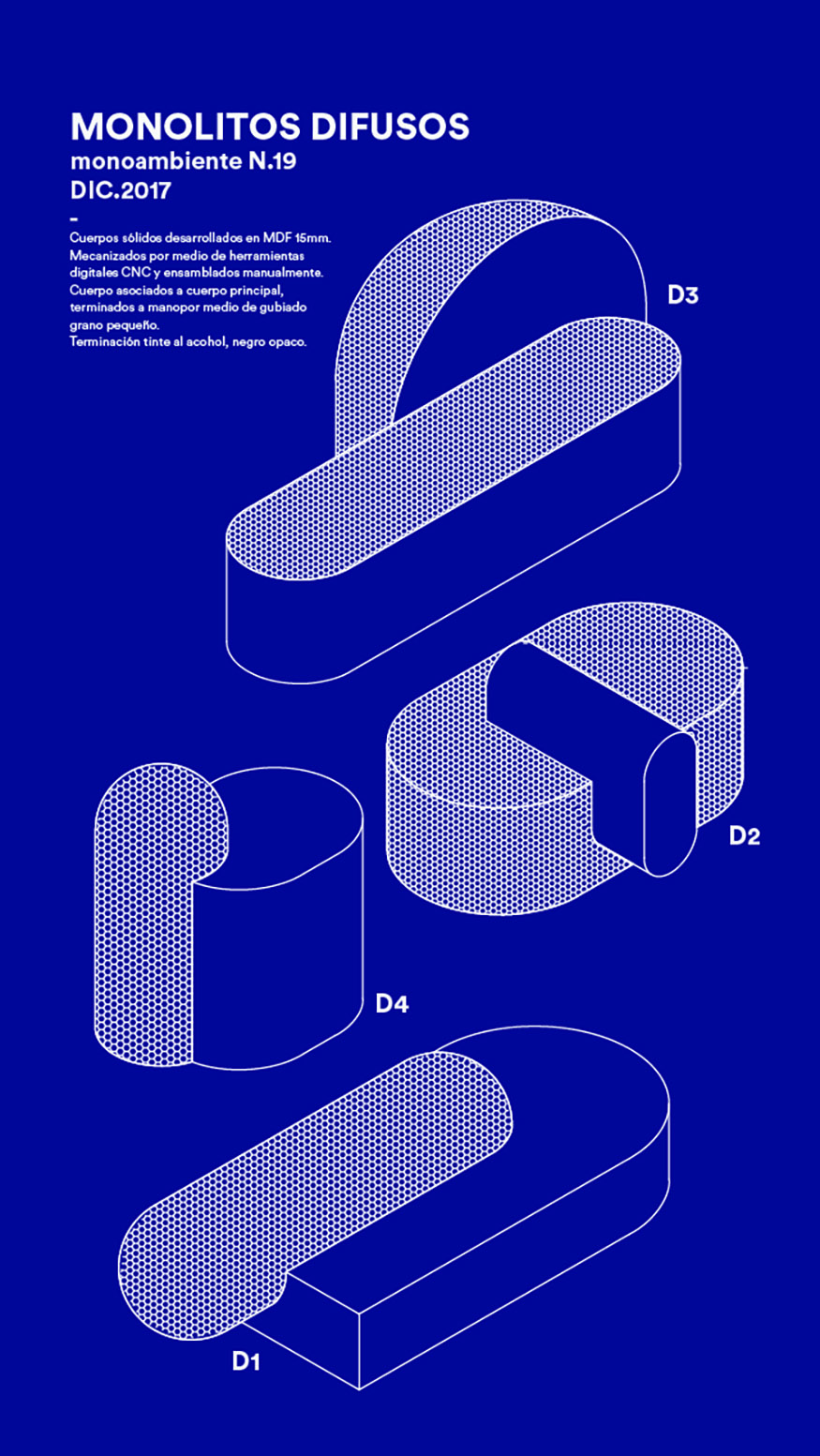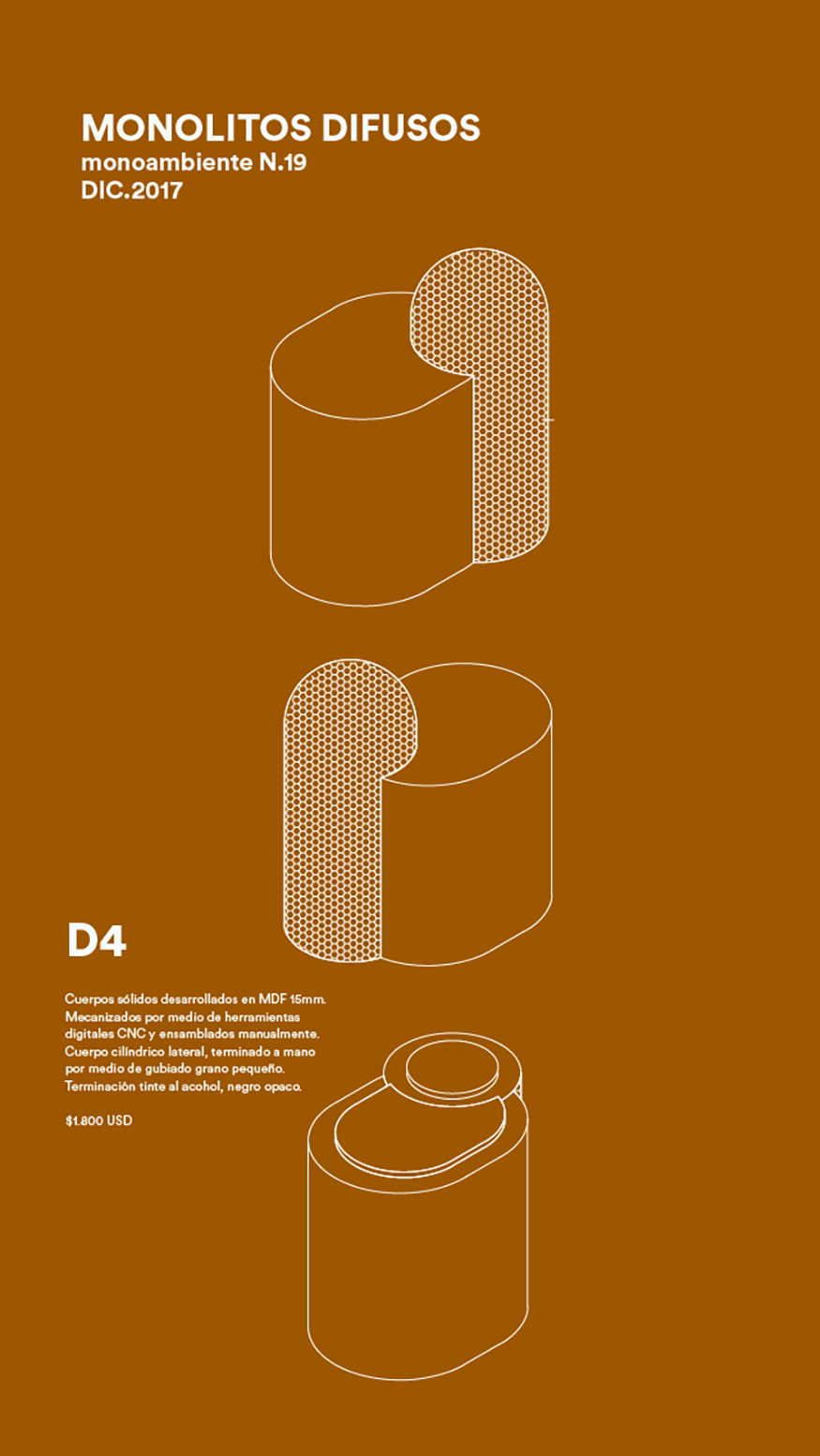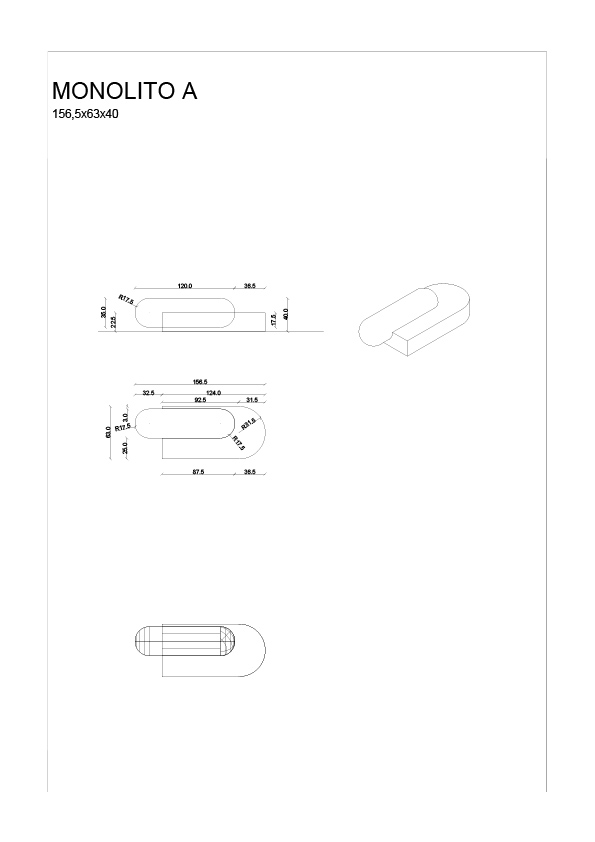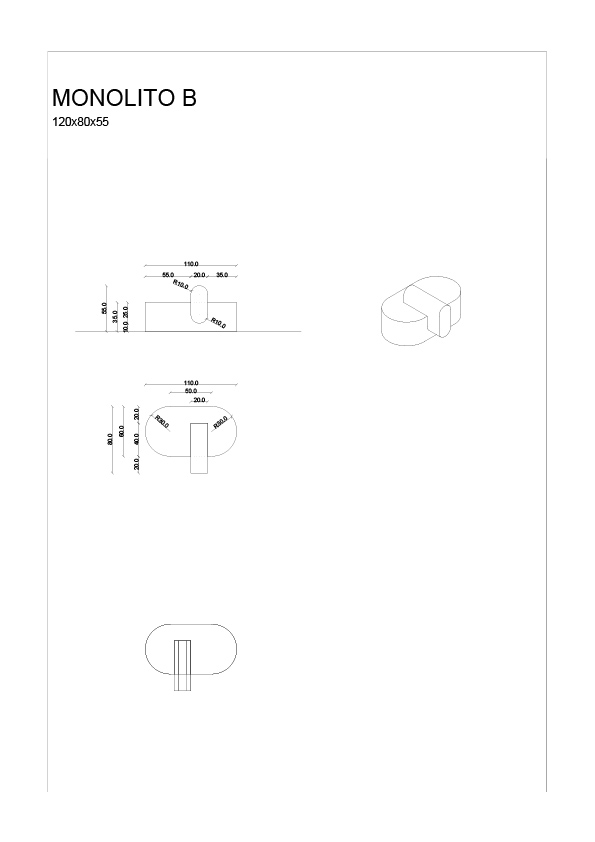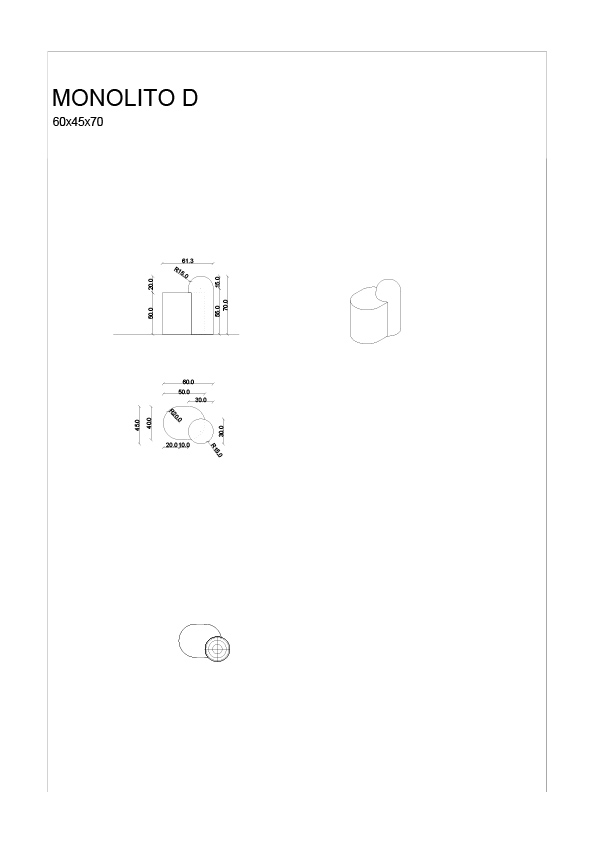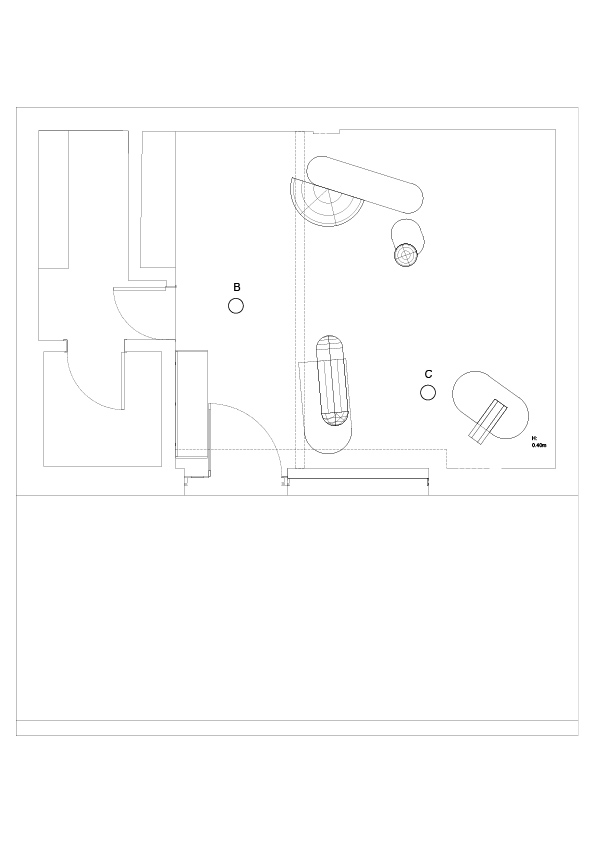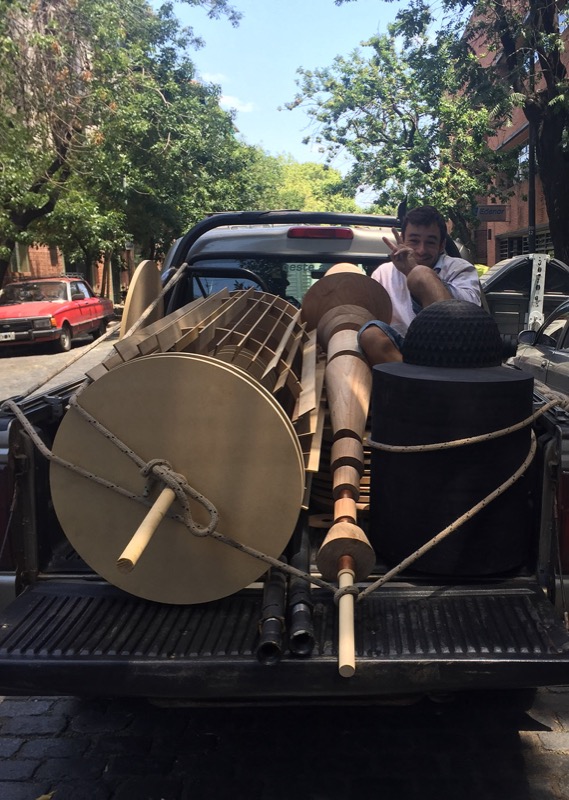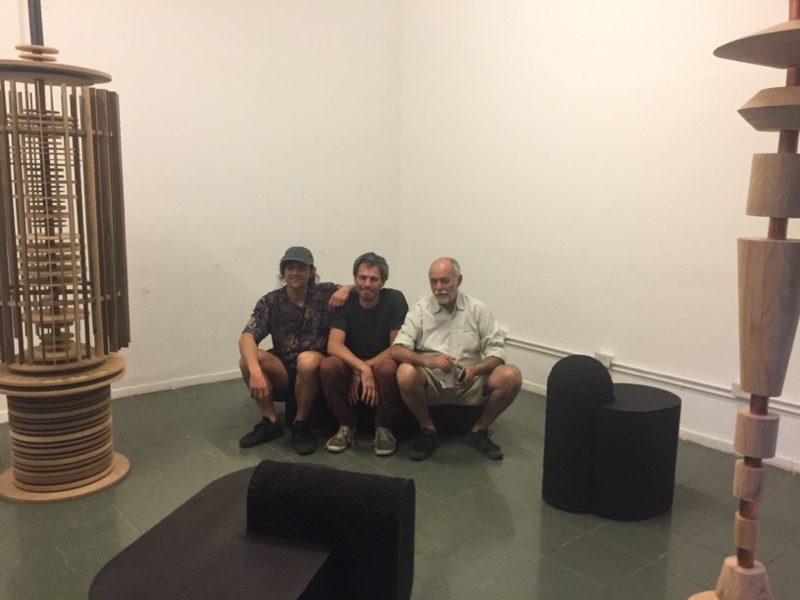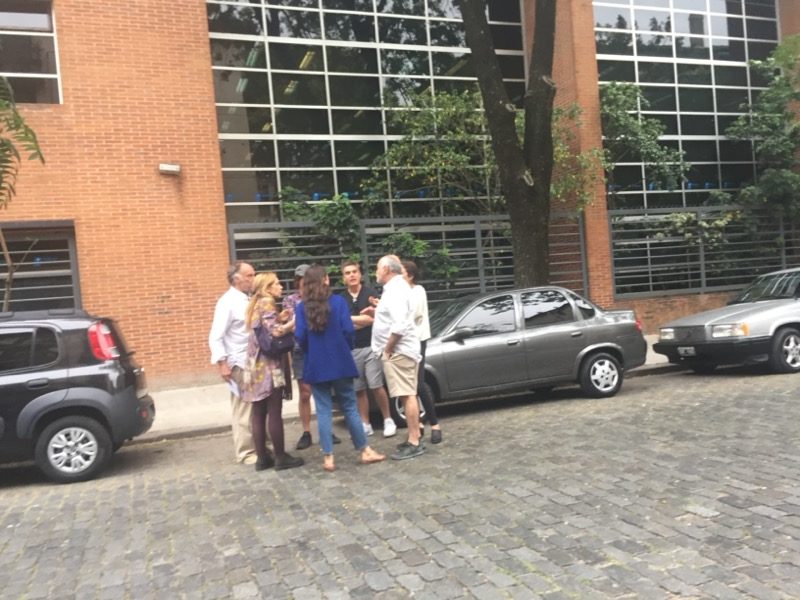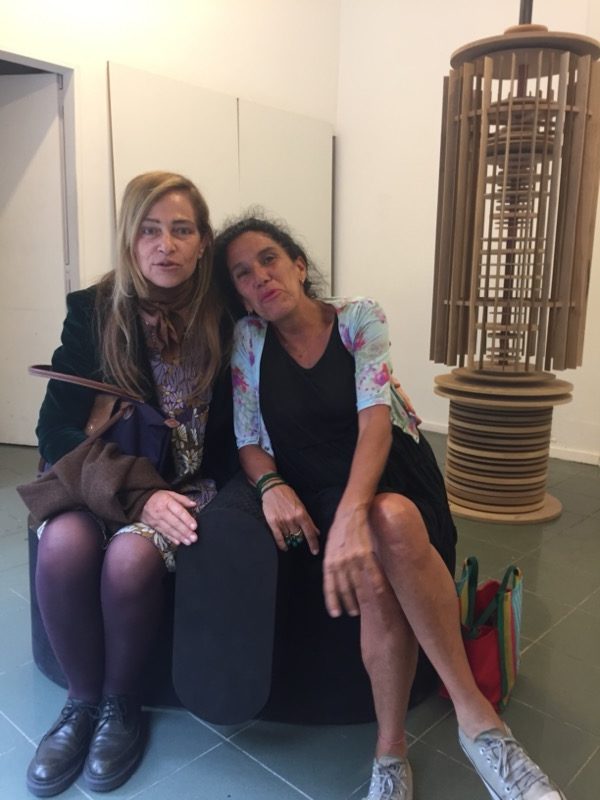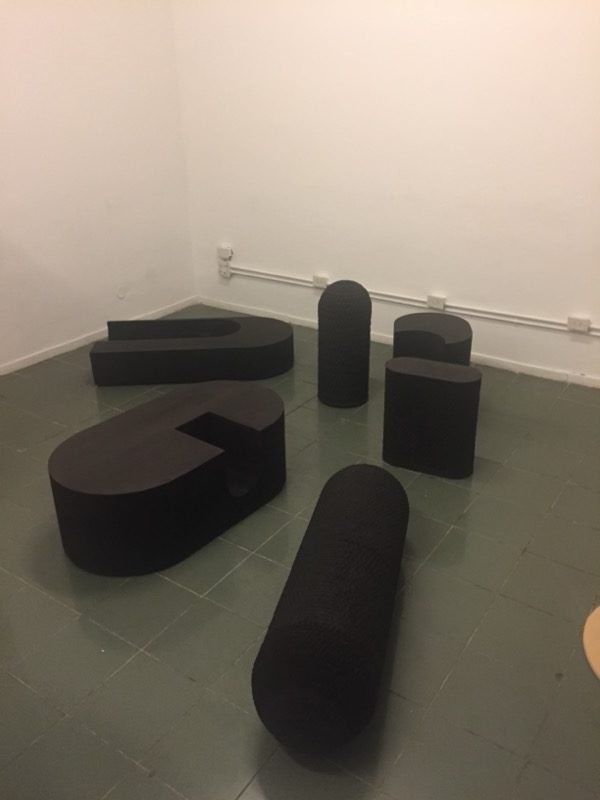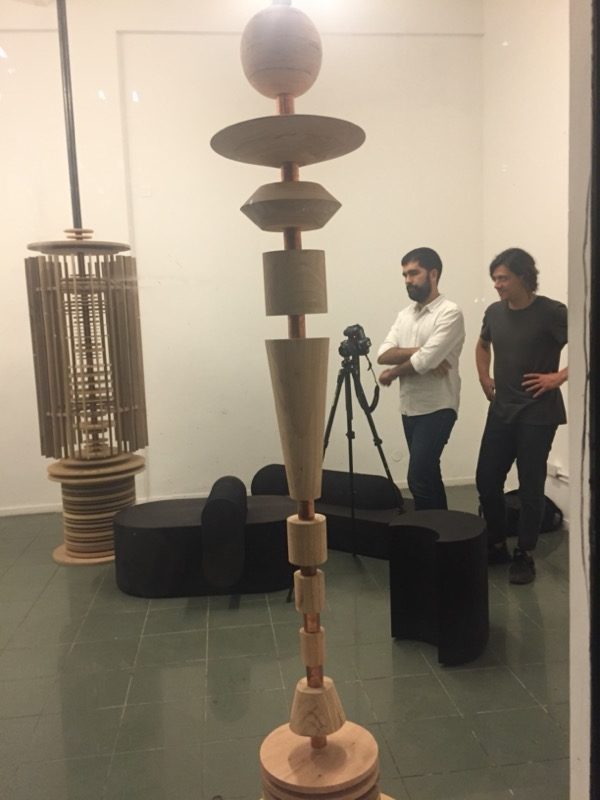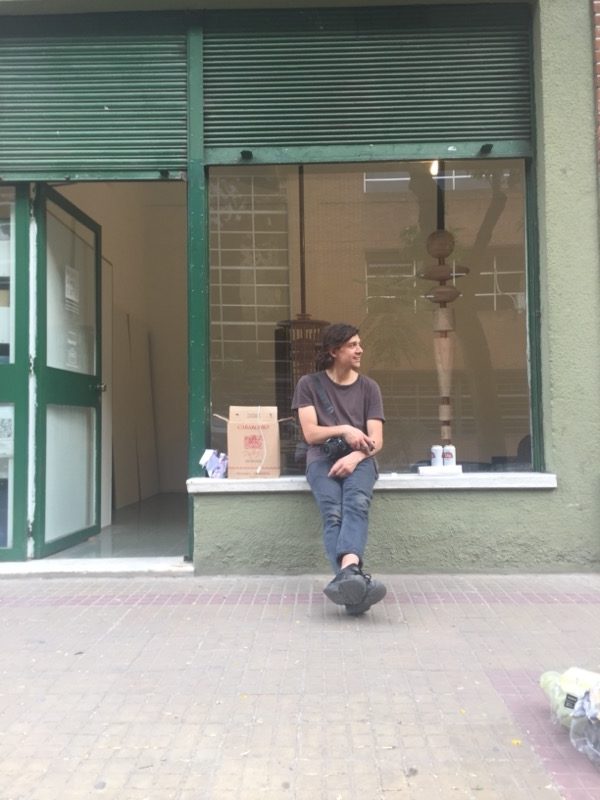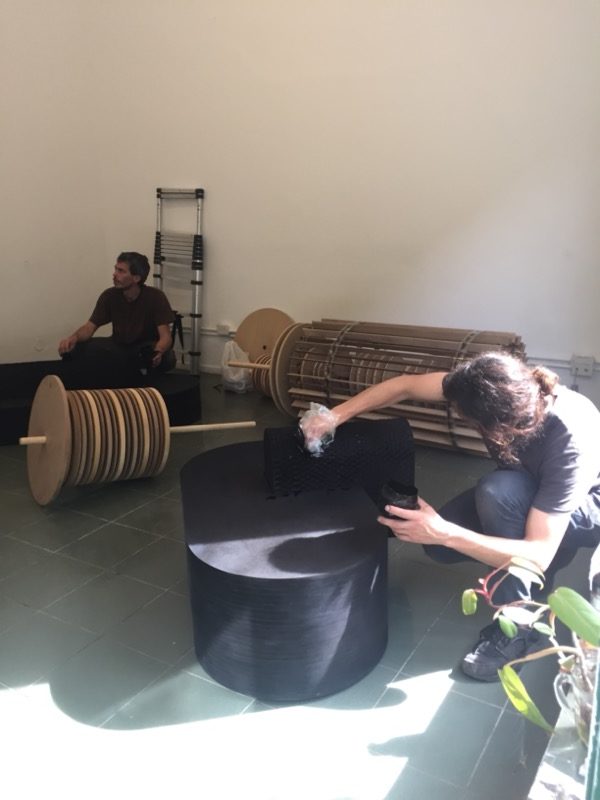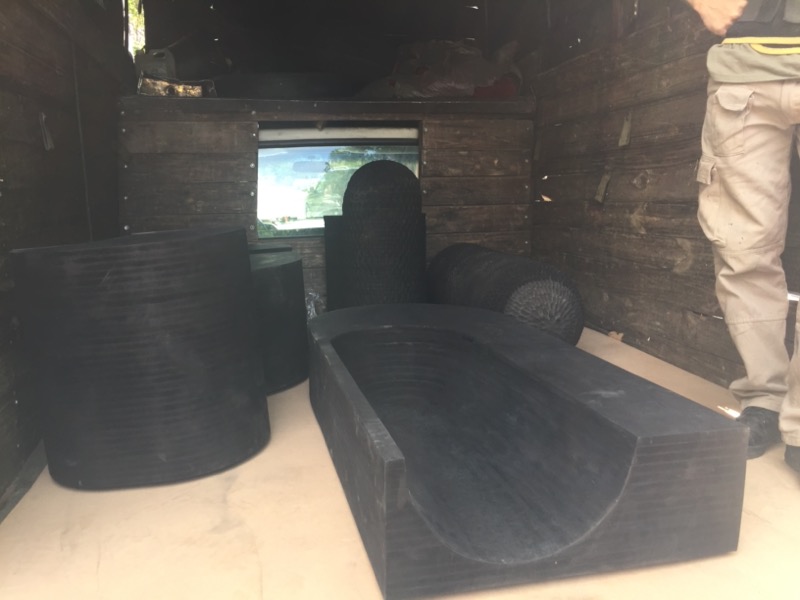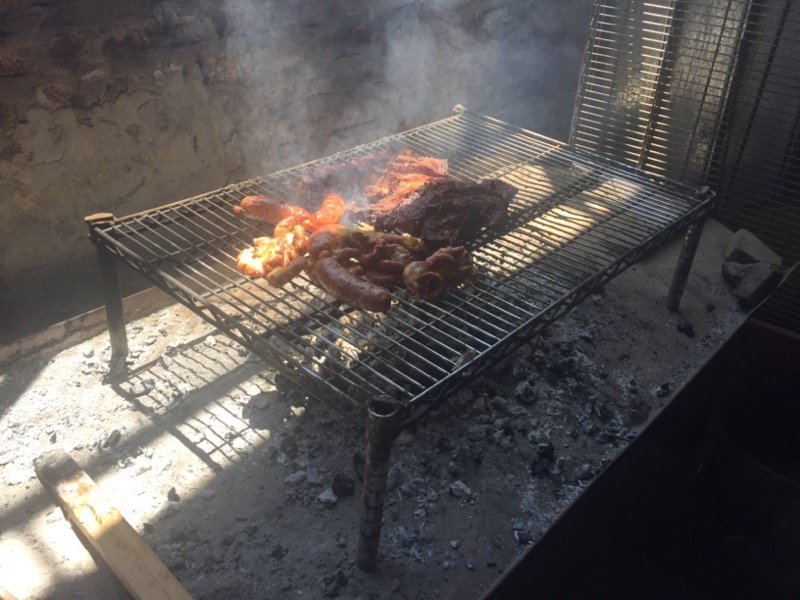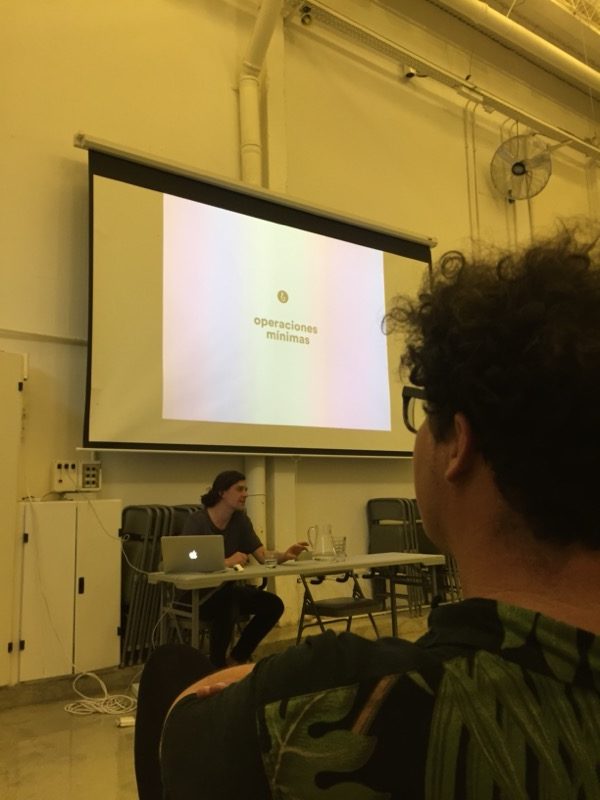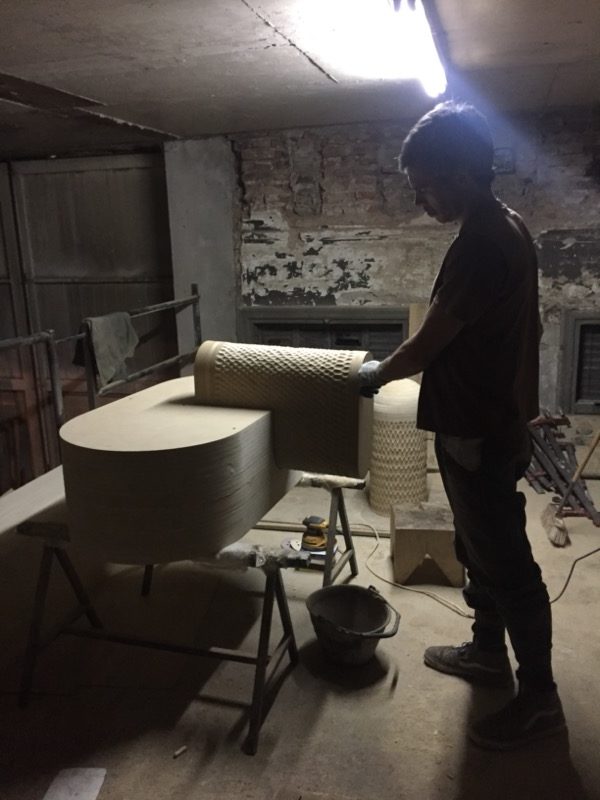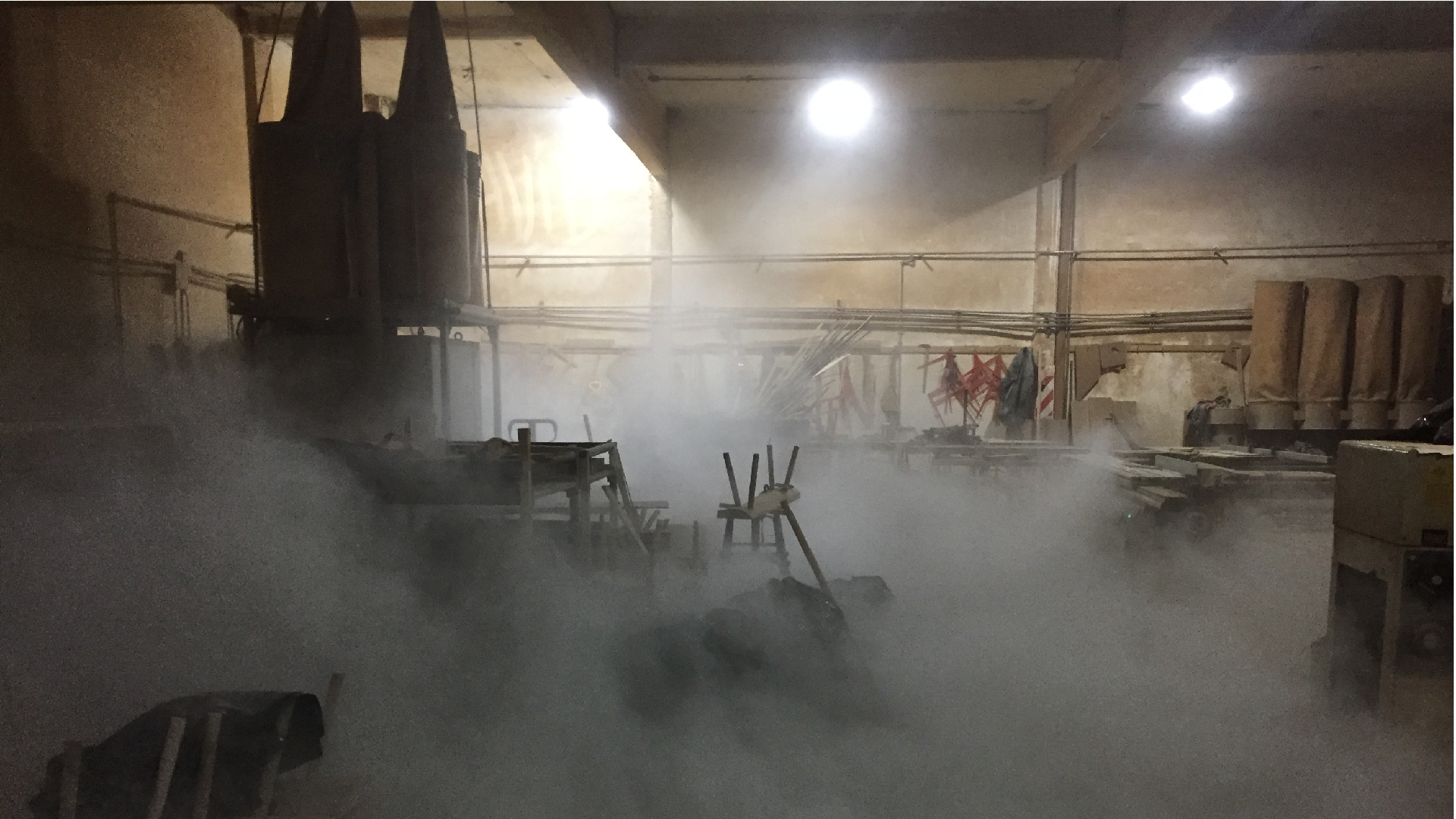Muestra 19
Antenas [Antennae] by Alejandro Sticotti ● Monolitos Difusos [Vague Monoliths] by Rodrigo Bravo
02/12/2017 - 02/03/2018
Transmaterial
Curatorial text by Martin Huberman
Over the course of their respective careers, both Alejandro and Rodrigo have been able to take their work, their way of making and of surviving in this field, beyond the product and into the realm of lifestyle.
I think understanding that is important to understanding their work.
Their projects and distinctive styles draw on experiences. They are stories compiled out of a constructive, aesthetic, and spatial drive. They are not merely material, but also emotional pursuits that build a memory that some of us have not yet had. Both are strikingly interested in the relational aspect of their objects, where they attempt to move from the intimacy of a moment to the definition of a hierarchy of volumes, for example. Those indirect languages determined by the subtlety of proportions and touch are the fruit of a combination of different fields and their universes, on the one hand, and the lifestyle to which they inadvertently look as they put forth a series of pieces determined by the unequivocal dialogue between hand and machine, on the other. Repetitive and precise machine work meets hand carving to highlight composite lumber. That leap back from wood pulp to the base, to volume, to the power of a stone, a tree trunk, a stick, depends on knowledge of the processes not only technical, but also spiritual, at stake in carpentry, one of the purest crafts known. It should come as no surprise, then, that that pursuit yields an indeterminate space of antennae and monoliths, works with both familiar vocabulary and indefinite character.


